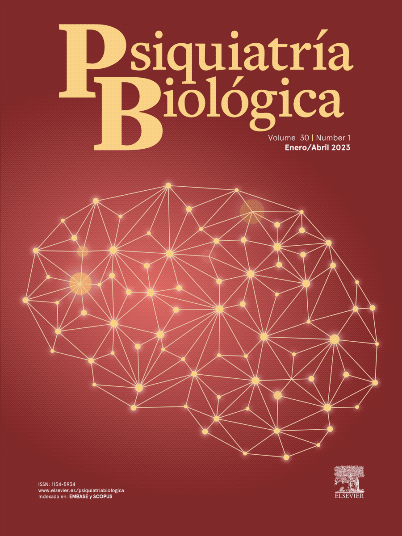Objetivo: Analizar la gravedad de la psicopatología de los pacientes que acuden a tratamiento a una unidad de conductas adictivas.
Material y Métodos: Se utilizó una muestra de 118 pacientes distribuidos en tres grupos en función del tipo de demanda: grupo alcohol (n = 38), grupo heroína (n = 44) y grupo cocaína (n = 36). Todos los pacientes fueron evaluados mediante el Brief Symptom Inventory (Derogatis, 1975). Se recogieron datos de variables sociodemográficas e historial de consumo.
Resultados: Al comparar los grupos no aparecieron diferencias significativas en la gravedad de la psicopatología. Tampoco aparecieron diferencias significativas cuando se comparaban todos los pacientes en función de su situación laboral y su nivel de estudios. Las mujeres mostraban puntuaciones significativamente más altas en el índice de severidad global cuando se comparaban con los varones (media 1,21 frente a 0,89, p = 0,028).
DiscusiÓn: La gravedad de la psicopatología no parece estar en función de la sustancia objeto de abuso por parte de los pacientes que demandan tratamiento. El proceso adictivo desarrollado a partir del abuso de las diferentes sustancias (alcohol, heroína y cocaína) supone una percepción del distrés emocional y una gravedad psicopatológica similar en todos los grupos. Es posible que el abuso de una sustancia concreta discrimine una variedad de síntomas psicopatológicos concretos, pero no una percepción global del malestar y la psicopatología.
Objective: To analyse the severity of the psychophatology in patients are attended in an addictive behaviors unity.
Material and methods: The sample studied consisted 118 patients distributed in three groups according to the type of request: alcohol group (n = 38), heroin group (n = 44), and cocaine group (n = 36). All patients were assessed by the Brief Symptom Inventory. Data on sociodemographic variables and abuse history were collected.
Results: There were no significant differences in the severity of the psychopathology among the groups. Neither significant differences appeared when the work status and degree of education were taken into account. Women showed higher scores on the global severity index when compared with men (mean 1.21 vs 0.89; p = 0.028).
Discussion: The severity of the psychophatology doesn't seem to correlate with substance abuse in patients who demand treatment. The addictive process developed beginning from abuse of the different substances (alcohol, heroin and cocaine) suggest a perception of the emotional distress and a similar psychophatological severity in all groups. Possibly the abuse of one specific substance discriminate a variety of specific psychophatological symptoms but not a global perception of discomfort and the psychophatology.






